When I began this quest, I believed that I would find a good number of geodesic domes. This is Berkeley after all. Was not Bucky Fuller one of our main guides?
Were we not on the cutting edge of radical structures in the sixties?
He was. We were. But I haven’t found the domes I thought I’d find. It may be that geodesic domes were a flash in the pan. Living in a structure that leaks like a sieve when it rains is not optimal in a climate with rain.
I know of one in the hills. Steps lead up a steep hill with a mailbox marking the dome as 1135 Cragmont. Here is a Google satellite photo:
I don’t know if there is access from Bret Harte or Keeler. If there isn’t, boy it is quite shlep up the hill from Cragmont. From Cragmont, this is what it looks like –
That is pretty impressive. And there is one on the way down into Tilden from Spruce/Wildcat Canyon.
But it is in Kensington and so off limits.
Up on Cragmont, there is what appears to be a geodesic dome incorporated into a house.
There is the office of Timberline Geodesics.
And at the Lawrence Berkeley National Laboratory there is the Advanced Light Source building, originally constructed in 1939 to house the cyclotron, designed by Arthur Brown, whose works included San Francisco’s City Hall, Opera House, and Coit Tower. Here it is under construction in 1941.
There are several other domes around town, mostly on churches. They don’t really count, but let me dabble with just a few.
On campus, the Hearst Mining Building takee the dome prize.
 Getting back to the streets of Berkeley, there is an almost-dome on your right as you come up Los Angeles from the Marin Circle.
Getting back to the streets of Berkeley, there is an almost-dome on your right as you come up Los Angeles from the Marin Circle.
Just down the hill from this sort-of-dome house, at 1900 Marin, is Berkeley Fire Station No. 4 – great round quirk.
In the unconventional shelter not based on right angles search, I had better luck with yurts than domes.
We learned about yurts in the Whole Earth Catalog.
 The easiest to see is on San Pablo.
The easiest to see is on San Pablo.
You can barely glimpse one looking north down the driveway of 1841 Addison (the elephant house):
The white top of the yurt is visible in this Google Map satellite photo:
The yurt at 1636 Bonita is somewhat visible from Virginia:
Again, a Google Map satellite photo:
There is the white yurt – there to see.
With the paucity of geodesic domes and only three yurts, this posting was doomed unless I redefined its scope. Which I did. I now include architecture that is not based on right angles. Its angles are just not right. Great pun, no?
Oscar Levant nailed it, by the way , when he said, “A pun is the lowest form of humor – when you don’t think of it first.”
So, though, let’s look at buildings that just aren’t right (angles).
I found three hexagon-ish buildings:
The Santa Fe right of way cut diagonally through the grid of the flats. The Santa Fe is gone, the right of way is in various stages of use or non-use, and a couple wedge-shaped houses remain.
Wedge buildings are known as flatiron buildings. It is a common noun and a proper noun.
Leaving the land of flatiron, wedge buildings, let’s explore some of the curves of Berkeley architecture. A very good place to start would be the Berkeley Plaza at the northwest corner of Berkeley Way and Martin Luther King Way. It is an interesting intersection. Trader Joe’s is on the southwest corner. On the southeast corner is the building that 40+ years ago housed the Berkeley Tenant’s Union, the White Panthers, and the International Liberation School. And then there is Berkeley Plaza.
Here is what I imagine happened.
Somebody drove by the Marin Civic Center building, Frank Lloyd Wright’s last commission, built after his death.
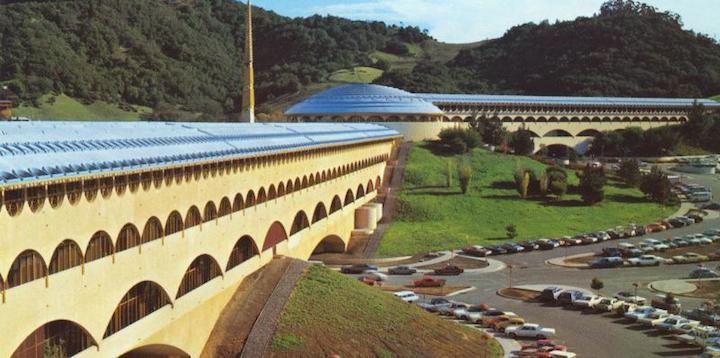 They sat down with an architect and said, “THAT is what I want my Berkeley Plaza to look like. But not so big. And not so expensive. And not so weird.”
They sat down with an architect and said, “THAT is what I want my Berkeley Plaza to look like. But not so big. And not so expensive. And not so weird.”
So: Berkeley Plaza:
It was built in 1977-78, designed by architect John Rolf Hattam as a Radio Shack store. In the 1990s it came to be known as the “Homeless Hilton” in honor of the homeless encampments on the rooftop parking lot. Then came Trader Joe’s and a major tarting up of the building.
The Plaza has always been home to businesses that did not interest me. It is now the home to Heat Hot Sauce, a quirky niche business.
There are plenty of less exotic architectural curves around, contributing to the quirky fabric. There are a few quonset huts around town, lightweight prefabricated corrugated steel structures with a semicircular cross-section.
On Spruce Street is one of the great eyesores of Berkeley, a quonset hut roof on a stucco house. That is falling down.
The next time that I go to Delano I will take a picture of the quonset hut on Mettler between Garces Highway and Cecil Avenue that was used for food distribution and strike coordination during the early days of the 1965 grape strike. If it’s still there.
Sticking with semi-circular cross-sections in Berkeley, let’s go to Telegraph Avenue. Let’s pretend we have a photograph of Lucky Store #18 at Telegraph and Haste and hope that one day we really will. In its next incarnation, it was Espresso Forum.
 And then the One World Family commune’s restaurant:
And then the One World Family commune’s restaurant:

 Then came Villa Hermosa – photograph needs to be located – and then, in 1990, what we know today, Amoeba Records.
Then came Villa Hermosa – photograph needs to be located – and then, in 1990, what we know today, Amoeba Records.
Other full semi-circles:
We sometimes chop of semi-circles at some point, giving a straight vertical wall.
Up in the hills, just to the right of 1112 Sterling, is a massive piece of unfinished building. It is not right to the max.
I get the feeling it won’t be completed. Too bad. I’d like to see what all they had in mind.
Lastly, curvy architectural flourishes:
None of this is unique to Berkeley, granted. Three yurts is pretty impressive, but, otherwise, just curves. The overall effect is to startle our eye, which expects right angles. This may be pushing the limits of what is and what is not quirky, but – it was and is an exercise for me as I walk the city. What weird curves will I see?
I mentioned the concept of this posting to my friend even before I started it. He in turn mentioned it to Gabby. He talks with Gabby more often than I do – shame on me. Gabby, though, volunteered that he had a “modest” collection of images built around the term “dangerous curves.” Would my friend be interested in seeing it? Of course. Gabby scanned his collection and sent it to my friend. I present it here.
But back to reality – I pressed for his opinion on the architectural photos here. He said that I had forgotten one important wedge-shaped building.
I agreed that it was interesting, but reminded him – Berkeley only. No Oakland. Ever. Never. For any reason.
He was dispirited, but I showed him the yurts again and asked for his overall impression.

















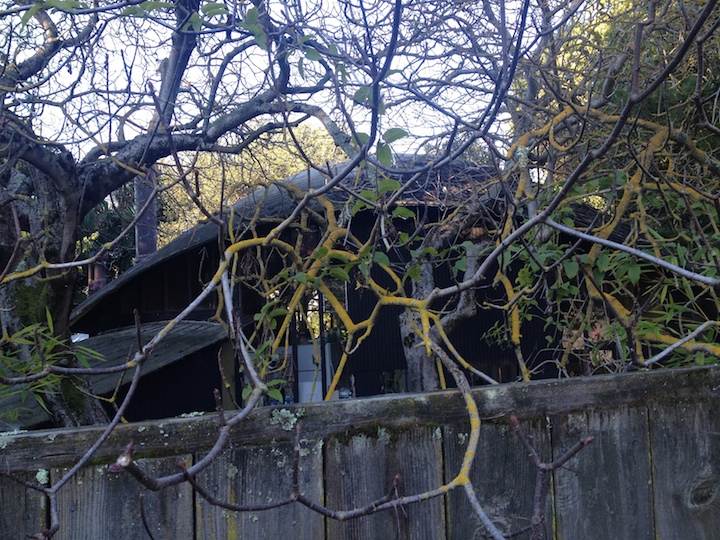




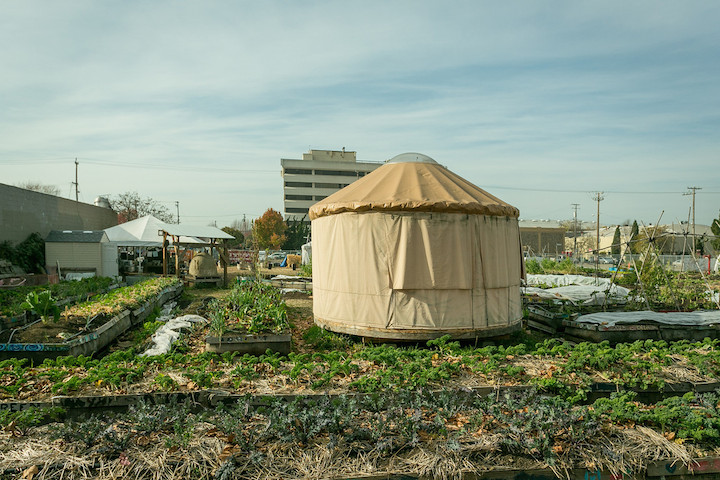
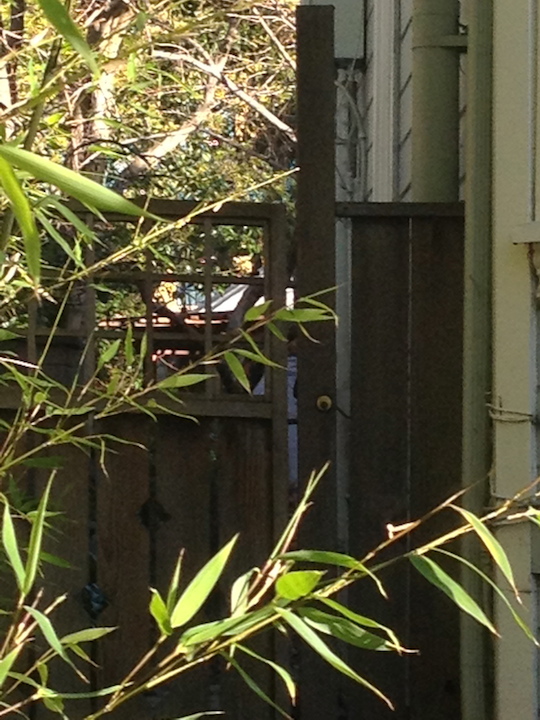









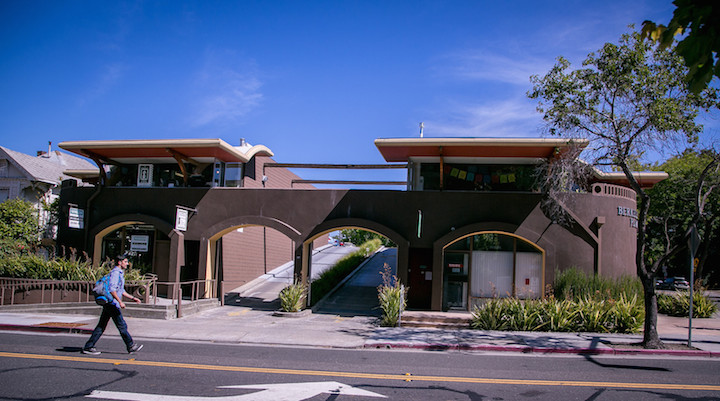















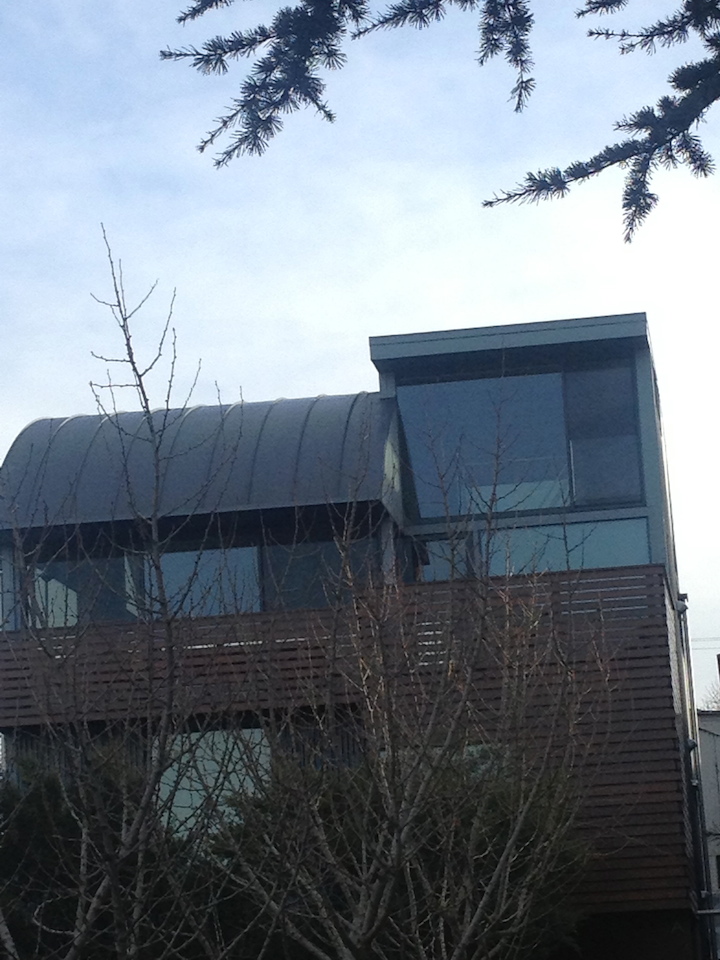




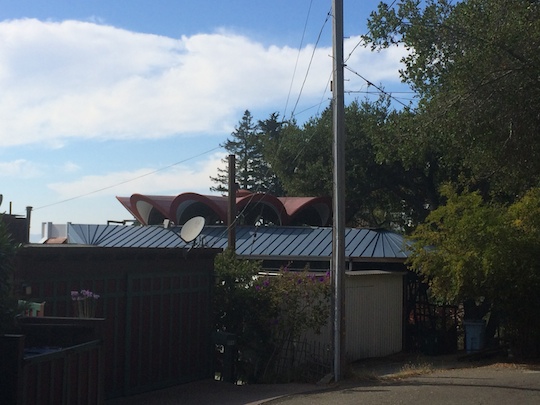



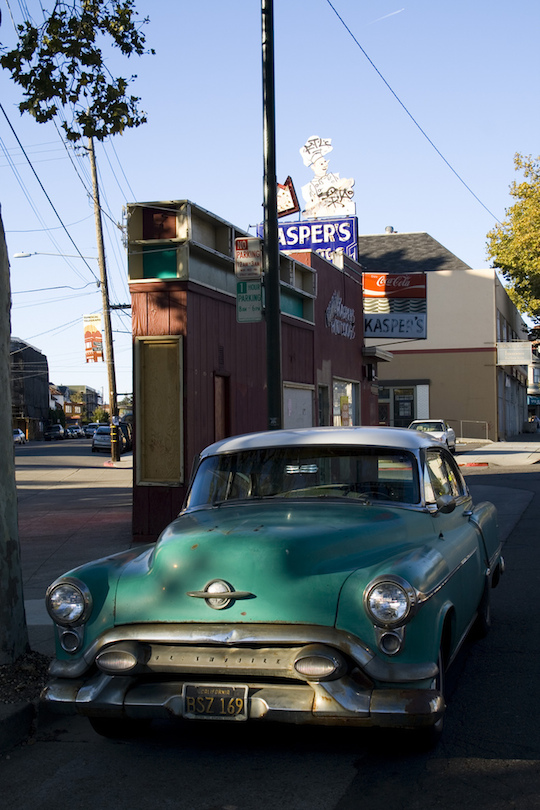

Great stuff,
… but you may have to add the Fish House, on Mathews Street, also in West Berkeley. This magical house began as a simple bungalow, but was redesigned by mad genius architect Eugene Tsui for his aging parents. He’s the guy in the purple jacket and silver goggles. Sadly, I believe this is perhaps the only one of his designs to be built. My neighbor Alice tells me Marvin Schwartz, an attorney from SF handled the mediations with the neighbors, pro bono through Community Boards.
http://www.house-crazy.com/ojo-del-sol-the-fish-house/
I have a small post on the fish house in Quirky Berkeley – http://quirkyberkeley.com/major-quirky-12-tsui-fish-house-2727-mathews/. My major work on the fish house was in Berkelyside, first about the exterior and about Tssui at http://www.berkeleyside.com/2015/11/30/how-quirky-is-berkeley-eugene-tssuis-fish-house-part-1/
And then the interior at
http://www.berkeleyside.com/2015/12/01/how-quirky-is-berkeley-eugene-tssuis-fish-house-part-2/
But I take your point – I should and can amend the just not right post to include the Fish House. The only angles that I saw were the appliances. Good suggestion!